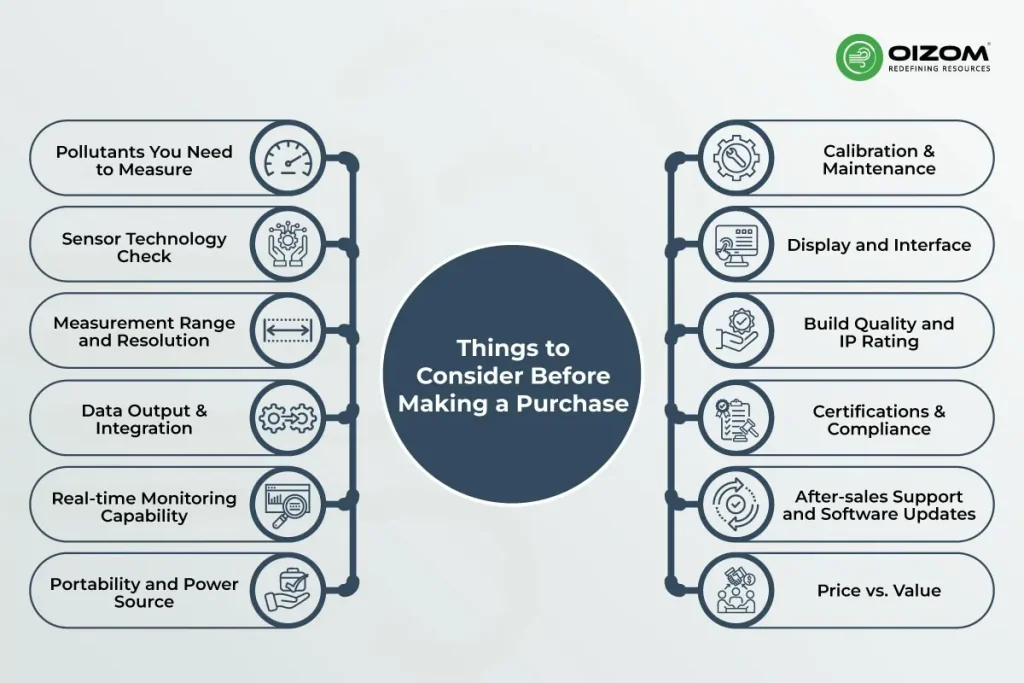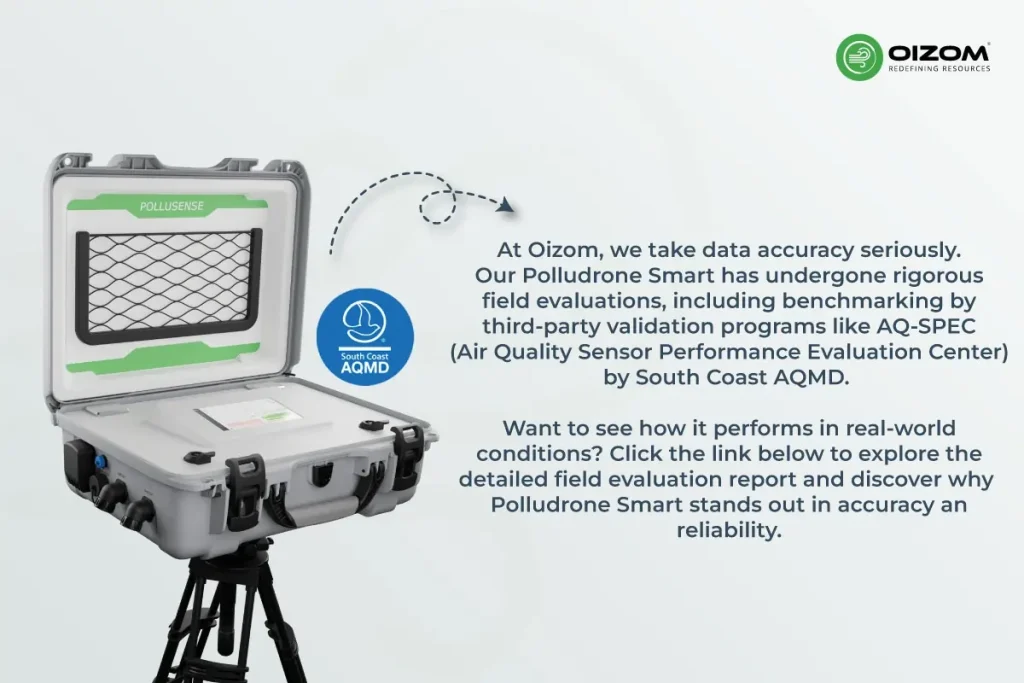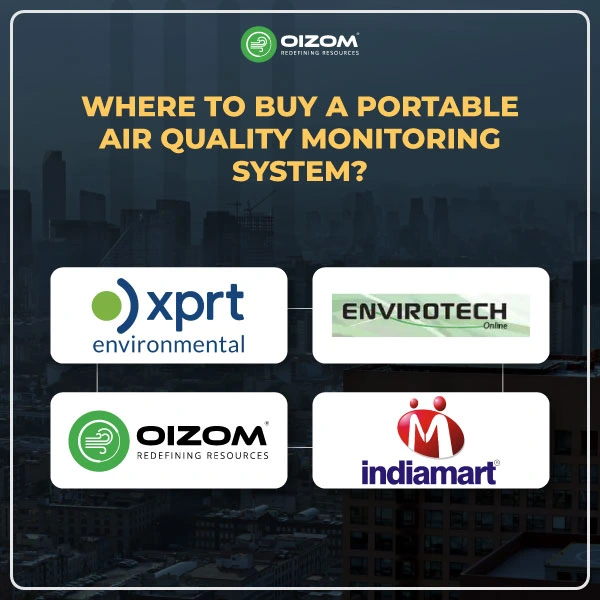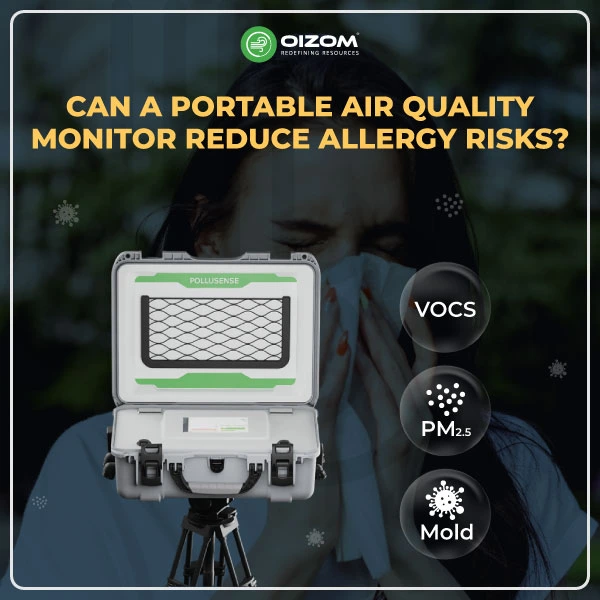Key Takeaway points:
- Know what you need to measure: Not all monitors track the same pollutants; identify if you need PM, gases like NO₂, VOCs, or advanced compounds like BTEX.
- Focus on sensor technology: The type of sensor (electrochemical, NDIR, laser scattering) impacts accuracy, calibration, and maintenance needs.
- Choose the right platform to buy: Go beyond generic marketplaces and opt for specialized sites or manufacturer websites that offer detailed specs and support.
- Check for data flexibility: Look for devices that support CSV, API, or Modbus, especially if you plan to integrate with cloud or industrial systems.
- Think long-term: Prioritize calibration, rugged design, support, and certifications. Your monitor should grow with your needs, not become a short-term fix.
Where to buy a portable air quality monitoring system?
Looking to invest in a portable air quality monitoring system? You’re not alone. As environmental concerns rise, professionals across industries, from EHS managers and auditors to researchers and consultants, are turning to compact, high-precision solutions for real-time air quality insights.
But let’s be clear: today’s portable monitors are nothing like basic PM detectors of the past. The advanced systems on the market now can measure everything from PM1, PM2.5, and PM10 to gases like NO₂, SO₂, CO, O₃, VOCs, and even hazardous compounds like formaldehyde and BTEX. Many come equipped with GPS, built-in displays, weather sensors, and IoT connectivity for remote data access—making them truly field-ready.
Still, not all devices are built equal. Accuracy, sensor quality, battery life, ruggedness, and ease of integration can vary dramatically. That’s why knowing where to buy is just as important as knowing what to buy.
In this blog, we’ll guide you through the best places to buy a technically sound portable air quality monitor, what features to look for, and how to ensure you’re investing in a system that meets your professional-grade requirements.
Popular Brands and Models in the Market
Looking for a portable air quality monitoring system that’s technically sound and field-ready? Here are eight industry-grade solutions trusted by professionals worldwide. As an air quality researcher, I’ve come across a variety of such systems, each with its strengths depending on application, environment, and technical expectations.
Pollusense by Oizom
Pollusense is a cutting-edge portable air quality monitor designed for versatility across sectors. It can measure up to 9 parameters, including PM1, PM2.5, PM10, CO, CO₂, SO₂, NO₂, O₃, and VOCs, with industry-grade accuracy. Housed in a rugged IP-rated suitcase with a built-in display, GPS, and long-lasting battery, it’s built for the field. The device supports real-time cloud sync via Oizom’s Envizom platform and is perfect for on-site audits, construction zones, mining sites, and industries. With local storage, it’s a truly all-in-one solution.
Why does Pollusense truly stand out in the air quality monitoring market?
Because we don’t just build monitors; we build trust in data. Every Oizom air quality monitoring device is first calibrated in an ISO/IEC 17025:2017 certified lab using NIST-traceable gas standards, strictly following international guidelines (U.S. EPA Vol II, Section 6.0 Rev.1).
But we don’t stop there.
After lab calibration, each device goes through a second level of testing, collocation with a custom-built reference station equipped with U.S. EPA-designated Federal Equivalent Method (FEM) analyzers. This double-layered approach ensures that Pollusense delivers data you can depend on every single time.
ZWIN-AQMS06-M – Tianjin Zwinsoft
A compact unit designed for ambient monitoring, featuring GPS and cellular connectivity, typically used for mobile surveys and supplementary environmental assessments.
Cerex Micro FTIR – Cerex Monitoring Solutions
This portable FTIR spectrometer is capable of detecting a wide range of gases simultaneously, with a focus on trace-level detection and hazardous gas analysis.
GT6000 Mobilis – Gasmet
A field-deployable system using FTIR for emission monitoring. Well-suited for stack testing, industrial audits, and process evaluation.
PEMS PRO 5 – Motrac Research
Primarily used in mobile emission measurement (PEMS) studies, this system integrates with vehicles and mobile sources for real-time data collection and regulation-based testing.
TSI DustTrak
A popular choice for particulate matter measurement using laser photometry. Often used in occupational safety, construction sites, and air quality audits.
Online Platforms to Buy Portable Air Quality Monitors
Looking to invest in a portable air-quality monitor? Today’s market offers a variety of online platforms that cater to technically sound, field-ready monitoring systems. While mainstream e-commerce sites may offer basic models, professionals often turn to specialized platforms that provide detailed specifications and reliable after-sales support.
- DirectIndustry is a global go-to B2B platform that offers access to technical datasheets, integration capabilities, and direct manufacturer contact, ideal for industrial or research-grade requirements.
- Environmental XPRT is a dedicated environmental marketplace where global suppliers list solutions for air, water, and noise monitoring. It’s a reliable hub to compare technologies and find region-specific distributors or integrators.
- Enviro-Tech Online serves as both a marketplace and a knowledge portal. It provides technical content alongside product listings, making it easier to evaluate performance parameters before engaging with vendors.
- For high-accuracy solutions, official brand websites offer direct access to performance specifications, certifications, and application guides. This is especially useful for users with regulatory or research-driven objectives.
- In India and Southeast Asia, IndiaMART and the Oizom official website offer localized support, customization options, and consultation, which are key for EHS managers, consultants, and environmental auditors.
Before purchasing, consider the sensor type (e.g., electrochemical, NDIR, laser scattering), data format (CSV, API, Modbus), and portability features like battery life and IP rating. Choosing the right platform ensures you’re not just buying a device but investing in reliable, actionable data.
Want to learn more about how Oizom Pollusense works and how it can fit into your monitoring setup? Get in touch with our experts today; we’re happy to help!
Manufacturer Websites
For professionals seeking in-depth technical insights and trusted specifications, visiting the manufacturer’s official website is often the most reliable route. Unlike third-party listings, these sites offer detailed product breakdowns, sensor technology, accuracy range, data output formats (CSV, Modbus, API), power specs, and integration options.
For those looking to go beyond just product purchase, like integrating with existing SCADA systems or customizing sensor configurations, direct access to the R&D or technical team through these websites can be a big advantage.
In short, if technical depth and deployment clarity are your priorities, always make the manufacturer’s website your first stop.
Things to Consider Before Making a Purchase

Before investing in a portable air quality monitor, it’s essential to evaluate both your needs and the device’s technical capabilities. Here’s what to keep in mind:
- Pollutants You Need to Measure: Identify whether you need to track PM1, PM2.5, PM10, CO₂, VOCs, formaldehyde, NO₂, O₃, or others. Not all devices measure all parameters.
- Sensor Technology Check if it uses electrochemical, NDIR, or laser scattering sensors. Each has different response times, accuracy levels, and calibration requirements.
- Measurement Range and Resolution: Ensure the monitor’s detection range aligns with the expected concentration levels in your environment. Higher resolution is crucial for research or regulatory use.
- Data Output & Integration: Look for data export options (CSV, Modbus, API) and cloud or local connectivity, depending on how you plan to use the data.
- Real-time Monitoring Capability: For dynamic environments, choose a monitor that provides real-time readings with fast refresh rates.
- Portability and Power Source: Consider the device’s size, weight, battery life, and whether it supports power backup for long-term outdoor use.
- Calibration & Maintenance: Some sensors drift over time. Opt for devices that offer auto or manual calibration options or support third-party calibration.
- Display and Interface: A built-in display can be useful for on-site readings. Also, check for app/web dashboards that allow remote monitoring and alerts.
- Build Quality and IP Rating: For harsh or outdoor conditions, ensure the monitor is housed in a rugged enclosure with appropriate water/dust resistance (e.g., IP65 or above).
- Certifications & Compliance: Look for certifications (e.g., CE, ISO, MCERTS) if you’re using the monitor for regulatory or commercial reporting purposes. Additionally, check for systems that are Tested & Recognised by leading air quality bodies: AQ-spec, USEPA, and MCERTS.
- At Oizom, we take data accuracy seriously. Our Polludrone Smart has undergone rigorous field evaluations, including benchmarking by third-party validation programs like AQ-SPEC (Air Quality Sensor Performance Evaluation Center) by South Coast AQMD.
Want to see how it performs in real-world conditions? Click the link above to explore the detailed field evaluation report and discover why Polludrone Smart stands out in accuracy and reliability.
- After-sales Support and Software Updates: Reliable customer support and firmware upgrades ensure long-term performance and compatibility.
- Price vs. Value: Don’t just compare price tags. Consider total value: accuracy, support, data quality, and long-term usability.

Conclusion
Buying a portable air quality monitor isn’t just about convenience. It’s about ensuring data accuracy, technical reliability, and long-term usability. Whether you’re sourcing from a specialized marketplace, a manufacturer’s site, or a verified distributor, always look beyond surface-level specs. Evaluate sensor types, pollutant coverage, data output formats, and integration capabilities to match your exact monitoring needs.
As the demand for actionable environmental data grows, so does the importance of choosing the right platform and device. From compliance and research to industrial health and urban planning, your monitoring goals should drive the purchase decision.
Looking ahead, the role of portable air quality monitors will only expand, from enabling hyperlocal air quality mapping to supporting ESG reporting and regulatory audits. Therefore, understanding portable air quality monitors becomes essential to ensure you invest in a device that can evolve with future environmental standards and expectations. In short, be data-smart, think long-term, and always buy purposefully.
FAQs
NDIR (Non-Dispersive Infrared) sensors detect gases like CO₂ by measuring infrared light absorption, offering high stability and long life. Electrochemical sensors, on the other hand, use chemical reactions to detect gases like CO, NO₂, or SO₂, providing high sensitivity for low gas concentrations.
Yes, most advanced air quality monitors support SCADA integration via standard protocols like Modbus (RTU/TCP) or 4-20mA output, ensuring seamless data flow into industrial control systems.
AQ-SPEC (Air Quality Sensor Performance Evaluation Center) is an initiative by South Coast AQMD to independently test air sensors. It helps users identify reliable and accurate monitoring devices for informed environmental decisions.






